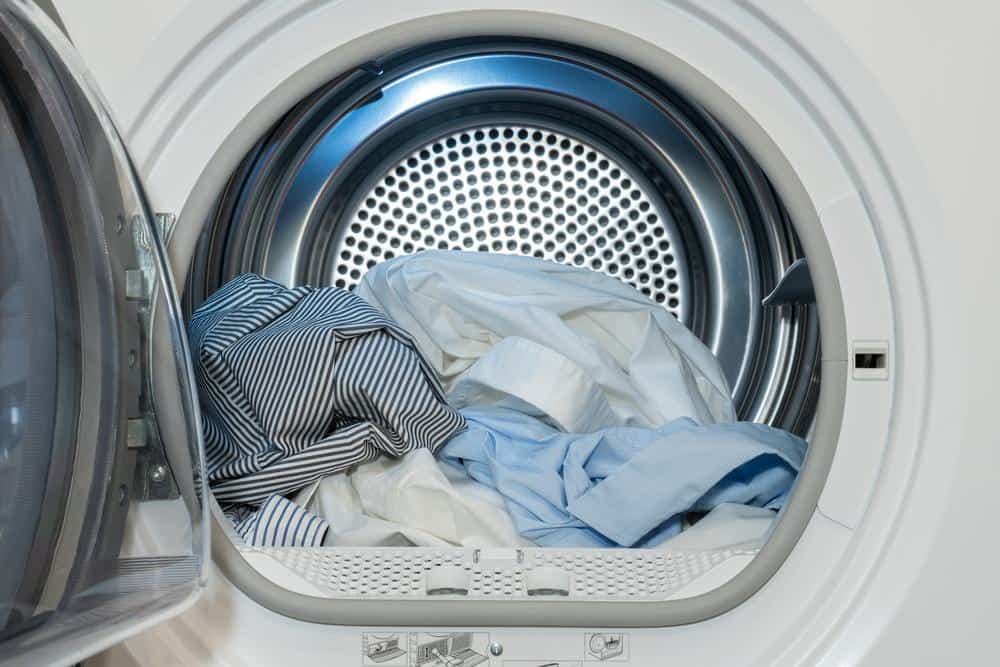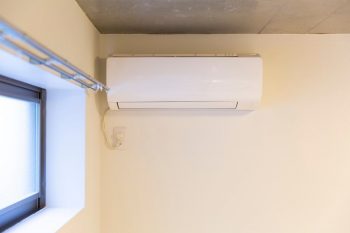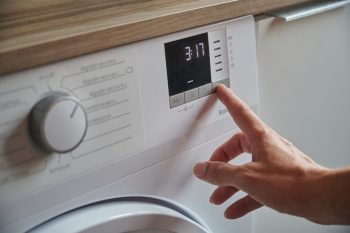
Cleaning your condenser dryer filter is a crucial task that not only ensures the longevity of your dryer but also its efficiency and safety. This comprehensive guide will take you through the step-by-step process of cleaning a condenser dryer filter and also inform you about its importance, the frequency of cleaning, and potential issues that might arise if it’s not cleaned regularly.
To clean a condenser dryer filter, first, switch off and unplug the dryer. Then, remove the lint filter, usually located inside the door or at the bottom of the dryer. Clean the filter by removing the lint and rinsing it under warm water. Also, clean the condenser unit, located behind a panel or door on the dryer, by rinsing it under running water. Make sure both the filter and condenser unit are completely dry before reinserting them into the dryer.
What is a Condenser Dryer Filter?
A condenser dryer filter, also known as a lint filter or fluff filter, is a fine mesh that captures lint, fibers, and debris from your laundry during drying cycles. This prevents the excess debris from being drawn through the airflow into the heating element, helping to keep your tumble dryer functioning properly and safe from damage.
The filter is crucial for several reasons:
- It helps your clothes dry faster by allowing better air circulation when the filter is clean.
- It extends the life of your dryer by preventing the appliance from working harder due to a clogged filter, which can cause damage over time.
- It keeps your energy bills down by ensuring shorter drying times when the filter is not blocked.
- It maintains the safety of your dryer by preventing the risk of fires caused by dry debris coming into contact with the heating element.
Signs Your Condenser Dryer Filter Needs Cleaning
There are several signs that indicate your condenser dryer filter needs cleaning:
- Excessive drying time: If your dryer takes longer than usual to dry clothes, it could be a sign that the filter is clogged and needs cleaning.
- Poor drying performance: If your clothes come out damp or not properly dried, it might be due to a dirty filter.
- Bad odors: A buildup of lint and debris in the filter can cause unpleasant odors in the dryer and your clothes.
- Warning indicators: Some dryers have warning indicators or symbols on the display that alert you when the filter needs cleaning.
How to Clean a Condenser Dryer Filter
Here’s a step-by-step guide on how to clean a condenser dryer filter:
- Switch off the dryer: Before cleaning the filter, make sure to switch off the dryer and unplug it from the power source to ensure safety.
- Remove the lint filter: The lint filter is usually located inside the door or at the bottom of the dryer. Gently remove the filter from its slot.
- Clean the lint filter: Remove the lint and fluff from the filter using your hands or a soft brush. Rinse the filter under warm water to remove any remaining debris. Make sure the filter is completely dry before reinserting it into the dryer.
- Clean the condenser unit: The condenser unit should be cleaned at least once a month or after 20 drying cycles. To access the condenser unit, you may need to open a panel or door on the front or side of the dryer. Carefully remove the condenser unit from its slot.
- Rinse the condenser unit: Hold the condenser unit under running water to remove any lint and fluff buildup. You can use a soft brush or cloth to gently clean the unit. Make sure to rinse the unit thoroughly to remove any remaining debris.
- Dry the condenser unit: Allow the condenser unit to air dry completely before reinserting it into the dryer. This may take several hours, so it’s best to clean the unit when you don’t need to use the dryer immediately.
- Reassemble the dryer: Once the lint filter and condenser unit are clean and dry, reinsert them into their respective slots. Plug the dryer back in and switch it on to ensure it’s functioning properly.
Conclusion
Regular cleaning and maintenance of the condenser dryer filter are essential to ensure optimal performance and safety. A filter that goes uncleaned or a damaged one that goes unreplaced will not do its job properly, increasing the risk of fire and reducing the efficiency of the appliance.
Remember, a clean dryer is a safe and efficient dryer. So, make it a habit to clean your condenser dryer filter and enjoy the benefits that come with it.
Frequently Asked Questions
How often should I clean my condenser dryer filter?
It’s advisable to clean your condenser dryer filter after every use to ensure optimal performance. However, the frequency might also depend on how much laundry you do. If you use your dryer frequently, you might need to clean the filter more often.
Can I use any brush to clean the filter and condenser unit?
It’s best to use a soft brush to avoid damaging the fine mesh of the filter or the fins of the condenser unit. A toothbrush or a paintbrush can be a good option.
How long does it take for the filter and condenser unit to dry completely?
The drying time can vary depending on the ambient conditions. However, it’s generally safe to assume that it might take a few hours. It’s best to clean them when you don’t need to use the dryer immediately.
What happens if I run the dryer without the filter or condenser unit?
Running your dryer without a filter or condenser unit can potentially damage the appliance. It can also increase the risk of a fire hazard as there’s nothing to capture the lint and debris, which could come into contact with the heating element. Therefore, it’s essential to ensure that both the filter and condenser unit are in place and clean before running the dryer.
Why do some dryers have warning indicators for filter cleaning?
Some modern dryers come with warning indicators as a convenient feature to remind users to clean the filter. This helps maintain the efficiency and safety of the appliance. However, not all dryers have this feature, so it’s best to make it a habit to clean the filter regularly.












